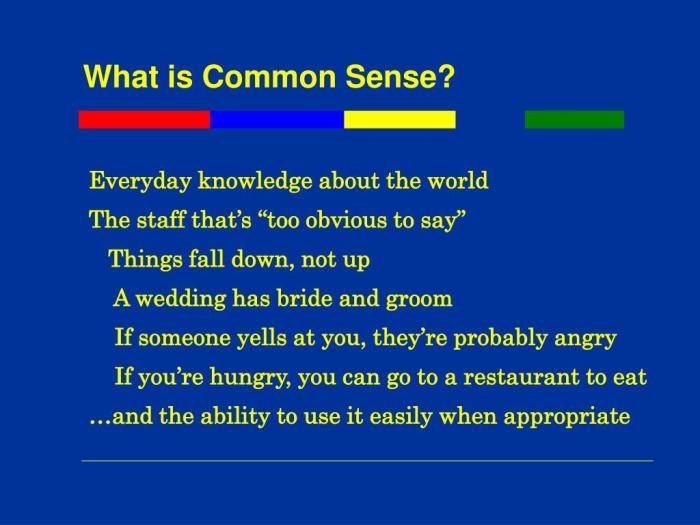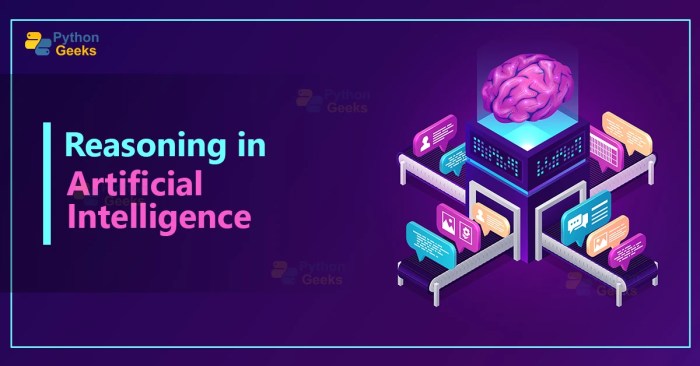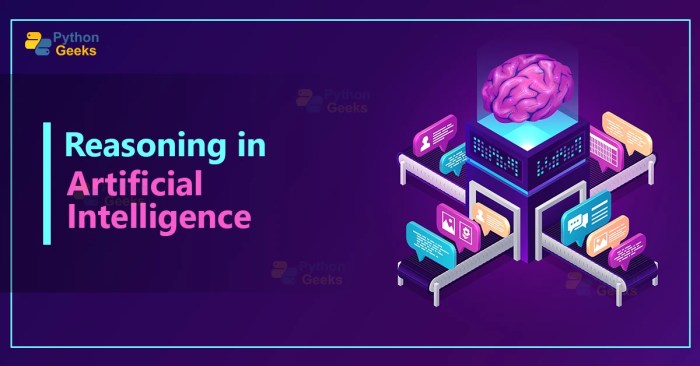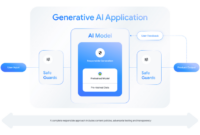Common sense test for ai smarter machines – Common Sense Test for AI: Smarter Machines? Imagine a world where artificial intelligence can understand and apply common sense, just like humans do. This might sound like science fiction, but it’s a crucial step in building truly intelligent machines.
While AI has made incredible strides in areas like image recognition and natural language processing, it still struggles with the nuanced understanding of the world that we take for granted.
The lack of common sense in AI systems is a significant hurdle, limiting their ability to solve real-world problems and interact naturally with humans. For example, a chatbot might fail to understand the context of a conversation, leading to nonsensical responses.
To bridge this gap, researchers are developing new methods for incorporating common sense into AI, using techniques like knowledge graphs and reasoning engines. The goal is to create machines that can learn from experience, adapt to new situations, and make decisions based on sound judgment.
The Need for Common Sense in AI
Artificial intelligence (AI) has made remarkable strides in recent years, excelling in tasks like image recognition, natural language processing, and game playing. However, despite these advancements, AI systems still struggle with a fundamental human capability: common sense. This lack of common sense limits the ability of AI to truly understand and interact with the world in a way that resembles human intelligence.
Limitations of Current AI Systems in Understanding and Applying Common Sense Reasoning
Common sense reasoning is the ability to draw inferences and make judgments based on everyday knowledge and experiences. It allows humans to navigate complex situations, understand implicit meanings, and make logical deductions even when faced with incomplete information. AI systems, on the other hand, typically rely on vast datasets and algorithms to learn patterns and make predictions.
This approach often fails to capture the nuances of human understanding and can lead to unexpected errors in situations that require common sense.
Examples of Situations Where AI Fails Due to a Lack of Common Sense
Consider the following scenarios:
- An AI chatbot might misunderstand a sarcastic remark and respond in a literal manner, leading to a confusing or awkward interaction.
- A self-driving car might fail to recognize a pedestrian crossing the street outside of a designated crosswalk, resulting in a dangerous situation.
- An AI assistant might recommend a restaurant that is closed for renovations, unaware of the temporary closure.
Importance of Common Sense for AI to Perform Tasks That Require Human-Like Understanding and Judgment
Common sense is essential for AI to perform tasks that require human-like understanding and judgment. Here are some examples:
- Medical diagnosis:AI systems can analyze medical data and identify potential patterns, but they need common sense to interpret the information in the context of a patient’s individual circumstances, medical history, and lifestyle.
- Legal reasoning:AI can be used to analyze legal documents and identify relevant precedents, but it needs common sense to understand the nuances of legal arguments and apply the law to specific cases.
- Customer service:AI chatbots can handle basic inquiries, but they need common sense to understand the underlying needs and emotions of customers and provide empathetic responses.
Defining Common Sense for AI
Common sense, a seemingly effortless ability for humans, poses a significant challenge for AI. It’s the foundation of our everyday interactions, enabling us to make intuitive judgments and navigate complex situations. Defining common sense for AI is crucial to building machines that can truly understand and interact with the world in a way that mimics human intelligence.
Defining Common Sense
Common sense in AI refers to the ability of machines to understand and apply implicit knowledge, contextual understanding, and practical reasoning to solve problems and make decisions in real-world scenarios. It’s about going beyond explicit instructions and data to grasp the nuances of situations, predict outcomes, and act accordingly.
Challenges in Defining Common Sense
Formally defining common sense for machines presents several challenges:
- The vastness and ambiguity of common sense knowledge:Common sense encompasses a vast and often ambiguous collection of knowledge about the world, human behavior, and social norms. This knowledge is often implicit and difficult to articulate explicitly, making it challenging to represent and encode in AI systems.
- The subjective nature of common sense:Common sense can vary across individuals and cultures, making it difficult to establish a universal set of rules or principles. What might be considered common sense in one context might not be in another.
- The dynamic nature of common sense:Common sense is not static; it evolves with new experiences and information. AI systems need to be able to adapt and learn from new data and situations to keep their common sense knowledge up-to-date.
Approaches to Incorporating Common Sense, Common sense test for ai smarter machines
Despite these challenges, researchers have explored various approaches to incorporate common sense into AI systems:
- Knowledge Representation:This approach focuses on developing formal systems to represent common sense knowledge, such as ontologies, knowledge graphs, and probabilistic models. These systems aim to capture the relationships and connections between concepts, enabling AI to reason about the world in a more structured way.
- Machine Learning:Machine learning algorithms, particularly deep learning, can be trained on large datasets of text and images to learn patterns and associations that reflect common sense. For example, a neural network trained on a massive corpus of text can learn to associate “bird” with “fly” and “water” with “drink,” demonstrating a rudimentary form of common sense.
- Cognitive Science:Researchers draw inspiration from cognitive science to develop models of human reasoning and decision-making. These models aim to capture the mental processes involved in common sense reasoning, such as analogy, mental simulation, and causal inference. These insights can be used to design AI systems that reason in a more human-like way.
Learn about more about the process of plans to stop tech giants buying smaller rivals threaten future innovations in the field.
- Hybrid Approaches:Many researchers believe that a combination of different approaches is necessary to achieve true common sense in AI. This could involve integrating knowledge representation systems with machine learning techniques, or incorporating cognitive science principles into the design of AI algorithms.
This hybrid approach aims to leverage the strengths of each approach while mitigating their limitations.
Designing Common Sense Tests for AI: Common Sense Test For Ai Smarter Machines
To effectively evaluate the common sense capabilities of AI systems, we need to design comprehensive tests that assess their ability to understand and apply common sense reasoning in various domains. This involves identifying the key aspects of common sense that should be assessed and crafting test questions that challenge the AI’s understanding of these aspects.
Identifying Key Aspects of Common Sense
Common sense is a complex and multifaceted concept, encompassing a wide range of knowledge and reasoning abilities. To design effective tests, we need to identify the key aspects of common sense that are crucial for AI systems to possess. These aspects include:
- Understanding Physical Laws:AI systems should be able to understand and apply basic physical laws, such as gravity, inertia, and the conservation of energy. For example, they should be able to predict the outcome of simple scenarios like a ball rolling down a hill or a glass falling from a table.
- Reasoning About Objects and their Properties:AI systems should be able to reason about the properties of objects, such as their size, shape, weight, and material. They should also be able to understand how these properties affect the object’s behavior in different situations. For instance, they should be able to predict that a heavy object will fall faster than a light object or that a fragile object is more likely to break when dropped.
- Understanding Social Norms and Conventions:AI systems should be able to understand and follow social norms and conventions, such as politeness, etiquette, and appropriate behavior in different contexts. For example, they should be able to understand that it is rude to interrupt someone while they are speaking or that it is inappropriate to wear casual clothing to a formal event.
- Reasoning About Human Behavior and Emotions:AI systems should be able to reason about human behavior and emotions, such as understanding the motivations behind people’s actions and predicting how people will react in different situations. For example, they should be able to understand that someone who is crying is likely to be sad or that someone who is smiling is likely to be happy.
- Understanding Language and its Nuances:AI systems should be able to understand the nuances of language, such as sarcasm, irony, and figurative language. They should also be able to interpret the meaning of words and phrases in context. For example, they should be able to understand that the phrase “It’s raining cats and dogs” is a metaphor and does not literally mean that animals are falling from the sky.
Designing a Comprehensive Test Suite
A comprehensive test suite for evaluating common sense in AI systems should cover a wide range of domains and scenarios. The test questions should be designed to assess the AI’s ability to understand and apply common sense in various contexts, including:
- Physical World:Questions related to basic physical laws, object properties, and everyday scenarios involving objects and their interactions.
- Social Interactions:Questions related to social norms, conventions, and understanding human behavior in social situations.
- Language Comprehension:Questions related to understanding the nuances of language, interpreting the meaning of words and phrases in context, and recognizing figurative language.
- Reasoning about Events and Situations:Questions that require the AI to infer the cause and effect of events, predict the outcome of scenarios, and understand the motivations behind people’s actions.
- Knowledge and Reasoning:Questions that assess the AI’s ability to access and apply relevant knowledge to solve problems and make decisions.
Examples of Test Questions
Here are some examples of test questions that assess different aspects of common sense reasoning:
- Physical World:“If you drop a glass on the floor, what will happen to it?”
- Social Interactions:“You are at a friend’s house for dinner. You are offered a second helping of dessert, but you are full. What should you do?”
- Language Comprehension:“What does the phrase ‘raining cats and dogs’ mean?”
- Reasoning about Events and Situations:“A man is walking down the street when he sees a fire hydrant. He then takes out a hose and starts spraying water. Why is he doing this?”
- Knowledge and Reasoning:“You are driving to a friend’s house for dinner. You are running late. What is the best way to get there quickly?”
Evaluating AI Performance on Common Sense Tests

Evaluating the performance of AI systems on common sense tests is crucial to understand their progress in reasoning and understanding the world. These tests provide a standardized way to assess how well AI systems can handle situations that humans find intuitively easy but are often challenging for machines.
Metrics and Criteria for Evaluation
Several metrics and criteria are used to evaluate AI performance on common sense tests. These metrics help researchers and developers understand the strengths and weaknesses of different AI systems and guide the development of more sophisticated AI models.
- Accuracy:This measures the percentage of correct answers provided by the AI system. A higher accuracy score indicates better performance on the test.
- Precision:This metric focuses on the proportion of correct answers among all answers provided by the AI system. A high precision score indicates fewer false positives, meaning the AI system is less likely to make incorrect predictions.
- Recall:This metric measures the proportion of correct answers that the AI system identifies out of all possible correct answers. A high recall score indicates that the AI system is more likely to identify all relevant answers.
- F1-Score:This metric combines precision and recall into a single score, providing a balanced measure of performance. A higher F1-score indicates a better balance between precision and recall.
- Time Complexity:This metric assesses the time taken by the AI system to process and respond to a test question. A lower time complexity score indicates a more efficient AI system.
Comparison of AI System Performance
Various AI systems have been evaluated on common sense tests, with varying degrees of success.
- Rule-Based Systems:These systems rely on pre-defined rules and logic to reason about common sense situations. While they can perform well on simple tasks, they often struggle with complex or ambiguous situations.
- Statistical Machine Learning Models:These models learn patterns from large datasets and use statistical methods to make predictions. They can achieve high accuracy on some common sense tests, but they may lack the ability to generalize to new situations.
- Neural Networks:These models are inspired by the human brain and can learn complex relationships from data. They have shown promising results on common sense tasks, particularly in areas like image recognition and natural language processing.
Strengths and Weaknesses of Different AI Approaches
Different AI approaches have strengths and weaknesses in handling common sense reasoning tasks. Understanding these differences is essential for selecting the most appropriate approach for a particular task.
- Rule-Based Systems:
- Strengths:Good at handling simple, well-defined tasks and providing transparent explanations for their reasoning.
- Weaknesses:Can be brittle and inflexible, struggling with complex or ambiguous situations. Difficult to adapt to new information or changing environments.
- Statistical Machine Learning Models:
- Strengths:Can achieve high accuracy on tasks with large datasets and can adapt to new data.
- Weaknesses:May lack the ability to generalize to new situations and may be prone to overfitting, meaning they perform well on training data but poorly on unseen data.
- Neural Networks:
- Strengths:Can learn complex relationships from data and generalize well to new situations. They are particularly good at tasks involving perception, like image recognition and natural language understanding.
- Weaknesses:Can be difficult to interpret and may require large amounts of data for training. They are also susceptible to adversarial attacks, where small changes to input data can significantly affect the model’s predictions.
Implications of Common Sense AI

The development of AI systems capable of common sense reasoning holds immense potential to revolutionize various aspects of our lives. Imagine AI assistants that can understand our needs and preferences, anticipate our questions, and provide insightful solutions. Imagine AI systems that can navigate complex social interactions, understand nuanced language, and adapt to unexpected situations.
This is the promise of common sense AI.
Benefits of Common Sense AI
The benefits of developing AI systems with common sense capabilities are far-reaching and transformative.
- Enhanced Human-AI Collaboration:Common sense AI can bridge the gap between human and artificial intelligence, enabling more natural and intuitive interactions. Imagine AI systems that can understand our intentions, anticipate our needs, and provide assistance in a way that feels seamless and supportive.
- Improved Decision-Making:Common sense AI can enhance decision-making processes by providing context-aware insights and predictions. By considering a wider range of factors and understanding the nuances of situations, AI systems can make more informed and reliable decisions.
- Increased Safety and Security:Common sense AI can contribute to safer and more secure environments by enabling AI systems to identify and mitigate potential risks. For example, autonomous vehicles equipped with common sense reasoning could anticipate potential hazards and react accordingly, reducing the risk of accidents.
- Enhanced Creativity and Innovation:Common sense AI can unleash new possibilities for creativity and innovation. By understanding the world and its complexities, AI systems can generate novel ideas, solve problems in unconventional ways, and contribute to breakthroughs in various fields.
Risks and Ethical Considerations
While the potential benefits of common sense AI are significant, it’s crucial to address the potential risks and ethical considerations associated with this technology.
- Bias and Discrimination:AI systems trained on biased data can perpetuate and amplify existing societal biases. Common sense AI, if not carefully developed and monitored, could inadvertently contribute to discrimination in various contexts, such as hiring, loan approvals, and criminal justice.
- Privacy Concerns:Common sense AI systems require access to vast amounts of data, raising concerns about privacy and data security. It’s essential to ensure that data collection and usage are ethically sound and comply with privacy regulations.
- Job Displacement:The widespread adoption of common sense AI could lead to job displacement in various sectors. It’s crucial to consider the economic and social implications of this potential shift and invest in retraining programs to support workers impacted by automation.
- Misuse and Malicious Intent:The power of common sense AI could be misused for malicious purposes, such as creating deepfakes or manipulating public opinion. It’s important to develop safeguards and ethical guidelines to prevent the misuse of this technology.
Future of Common Sense AI Research
The development of common sense AI is a challenging but essential endeavor. Researchers are actively exploring various approaches, including:
- Large Language Models (LLMs):LLMs are trained on massive datasets of text and code, enabling them to acquire a broad understanding of language and concepts. However, LLMs often struggle with common sense reasoning and can exhibit biases and inconsistencies.
- Knowledge Graphs:Knowledge graphs represent knowledge in a structured format, enabling AI systems to reason about relationships and infer new information. However, creating and maintaining comprehensive knowledge graphs is a challenging task.
- Cognitive Architectures:Cognitive architectures aim to model human cognition, integrating various cognitive abilities, including common sense reasoning, memory, and learning. These architectures are still under development but hold promise for building more human-like AI systems.





